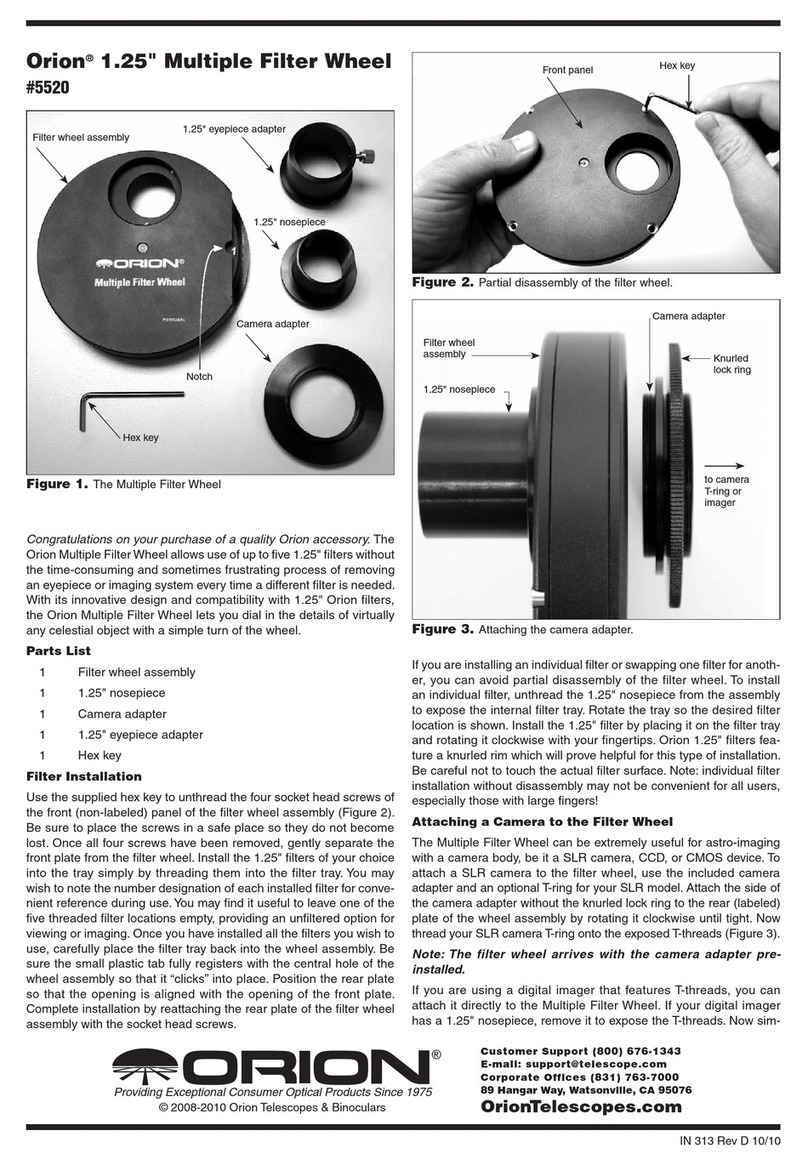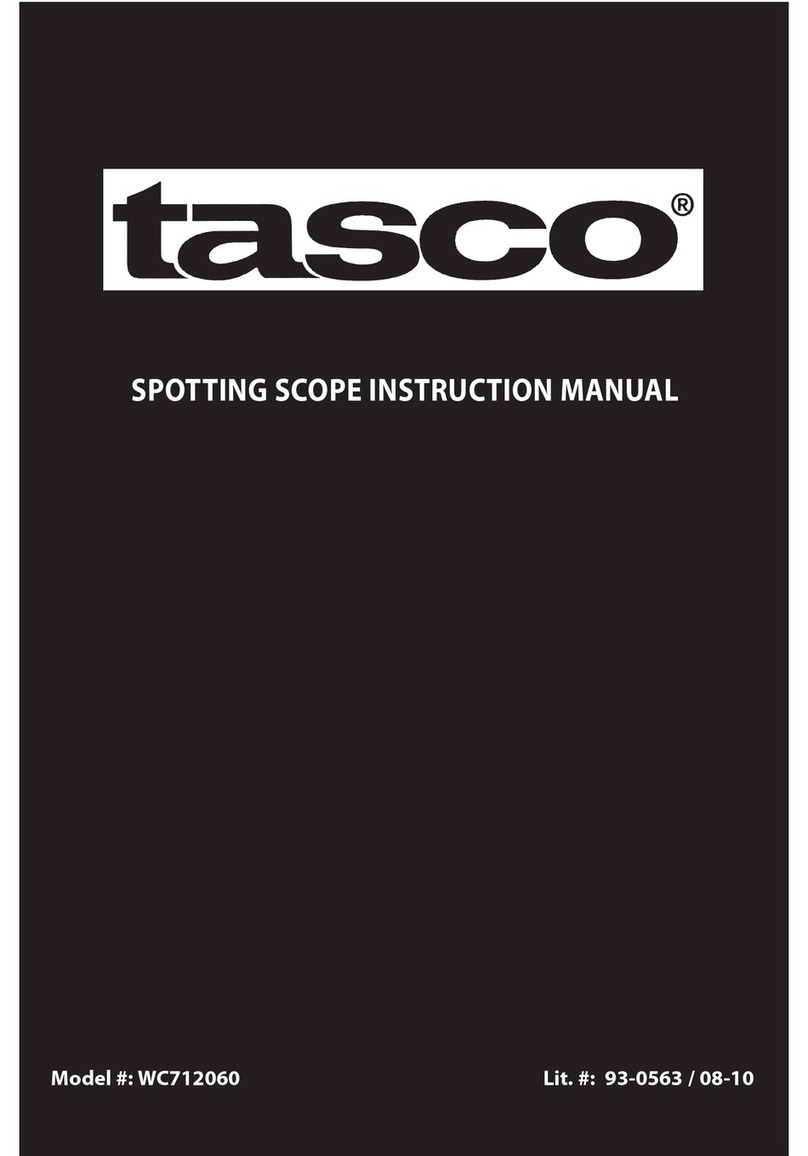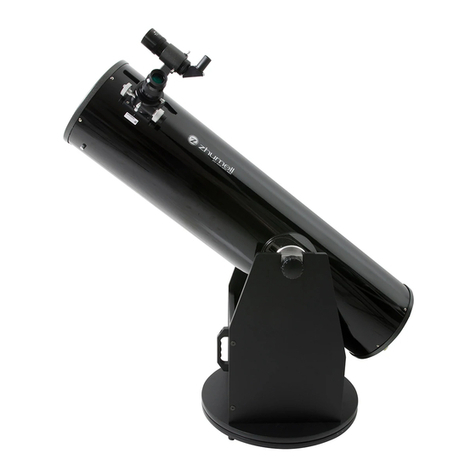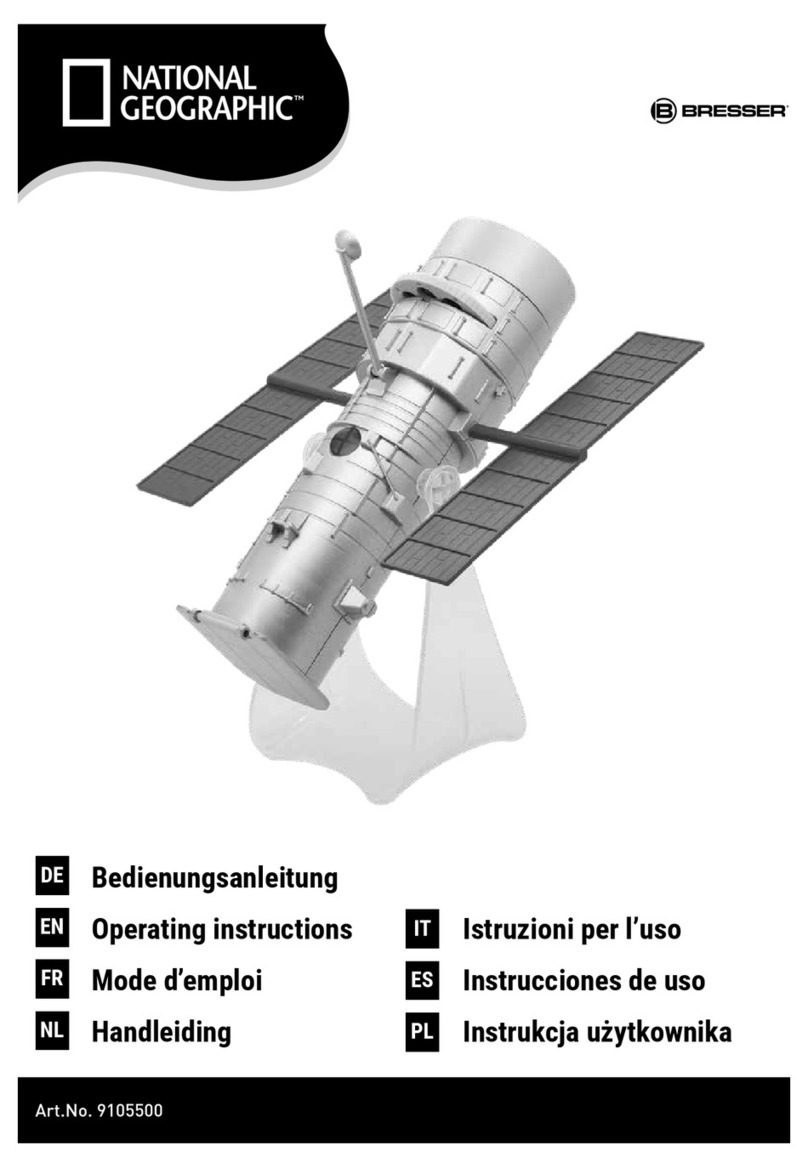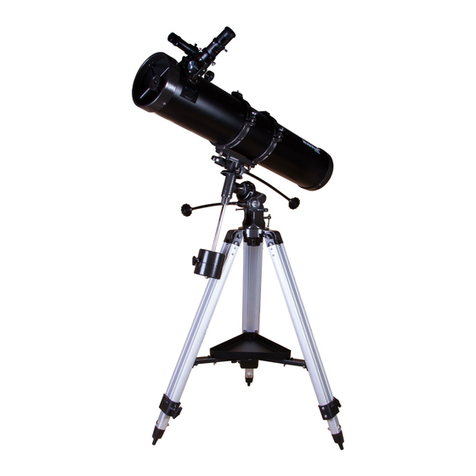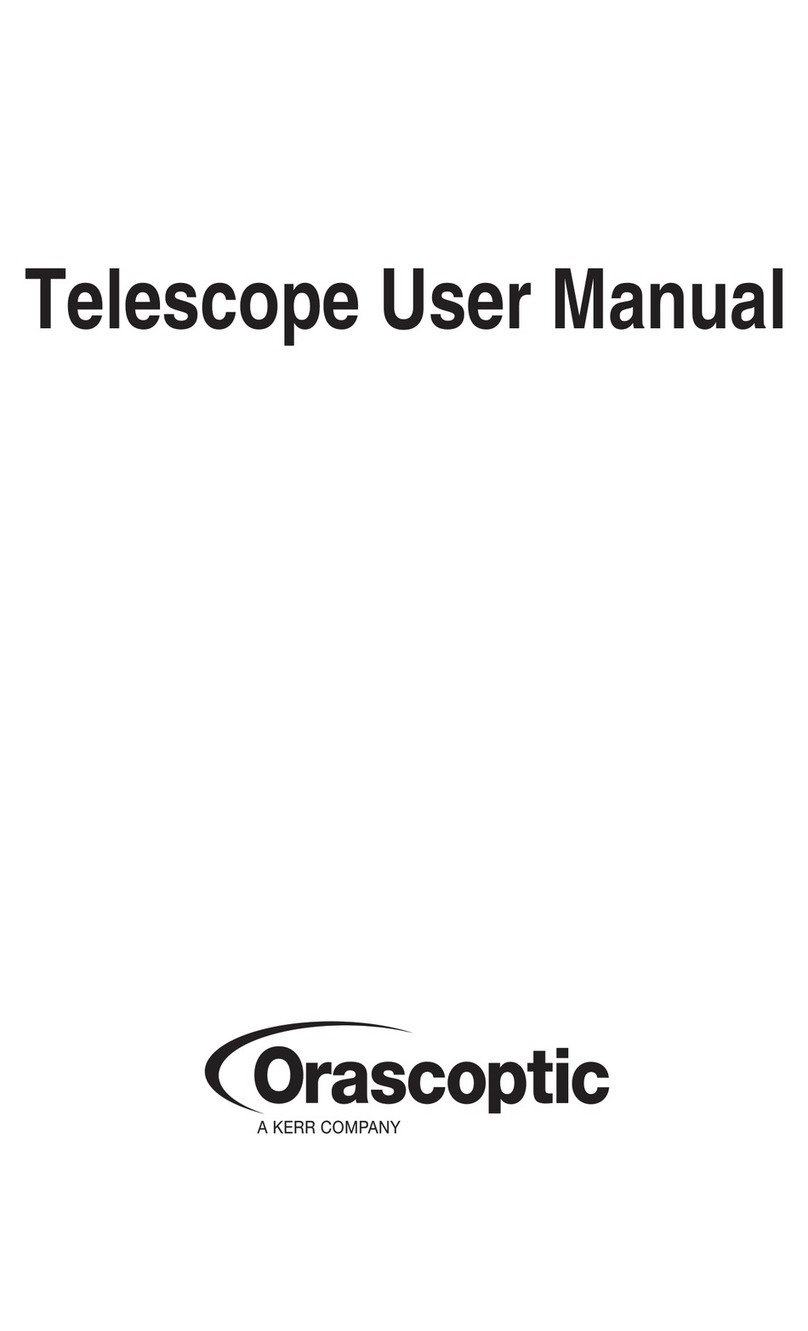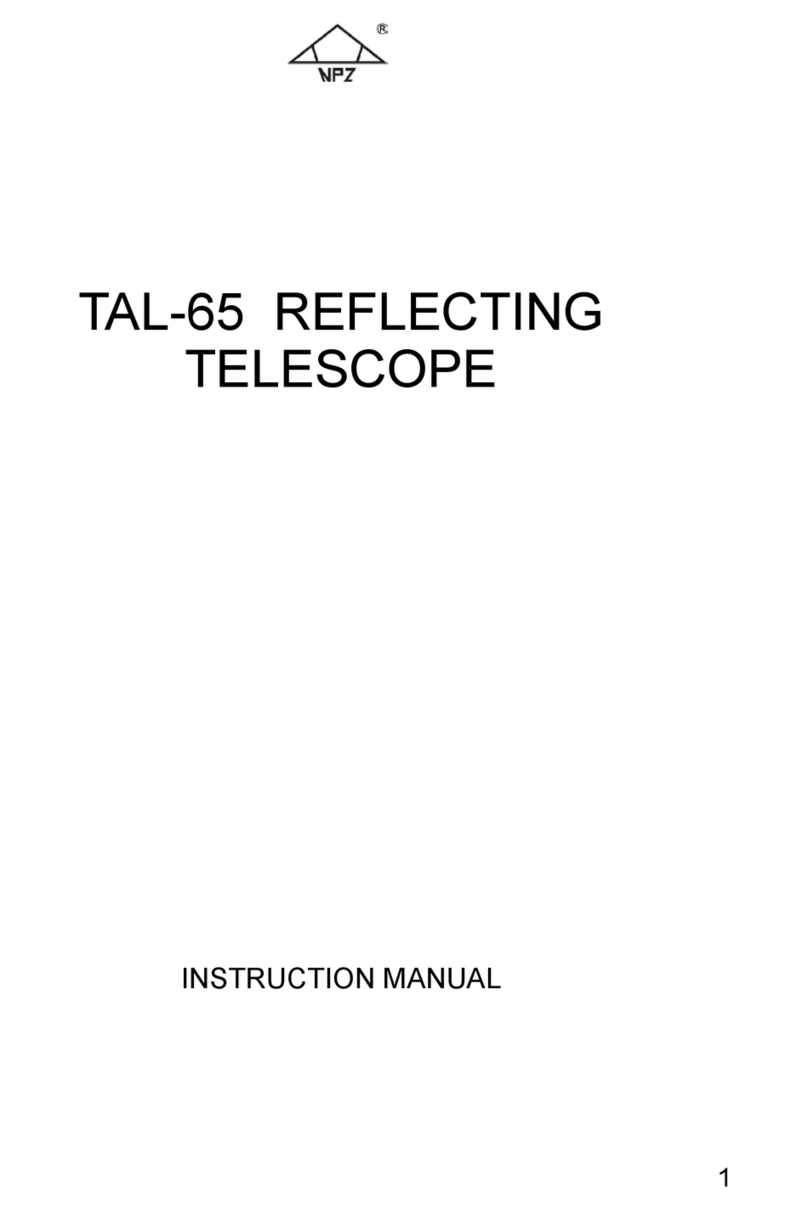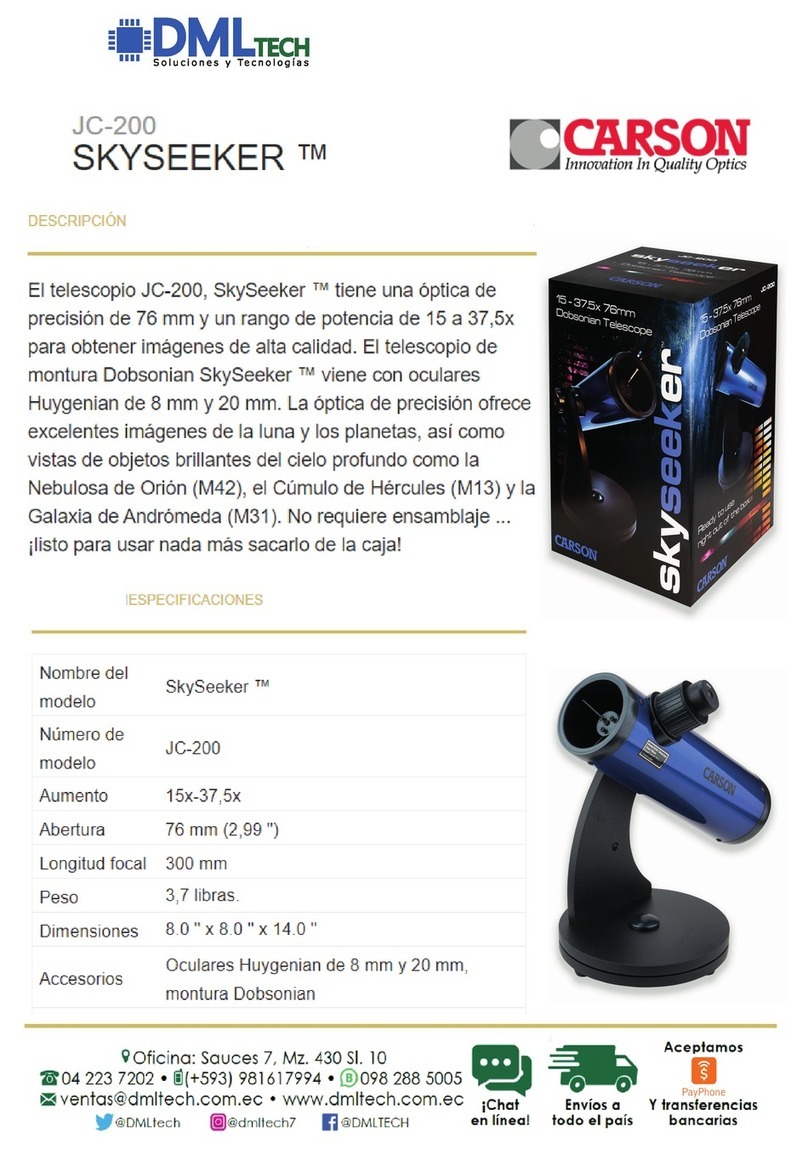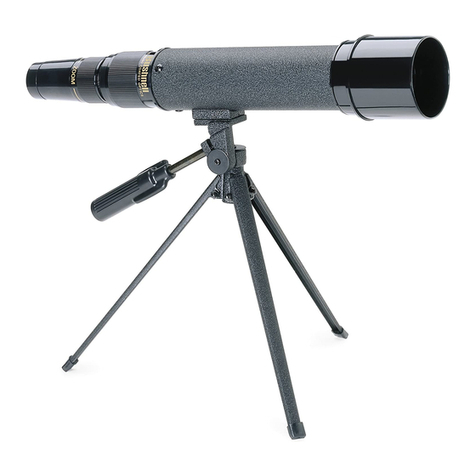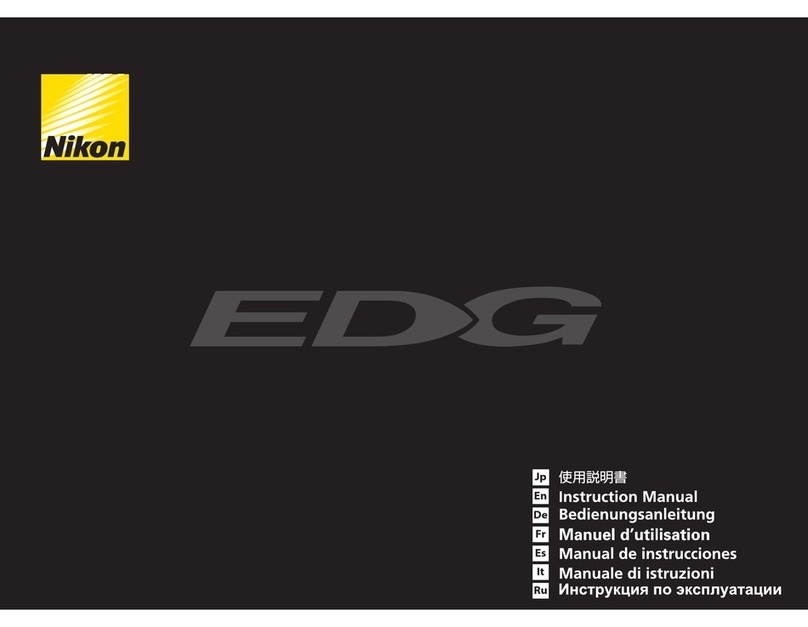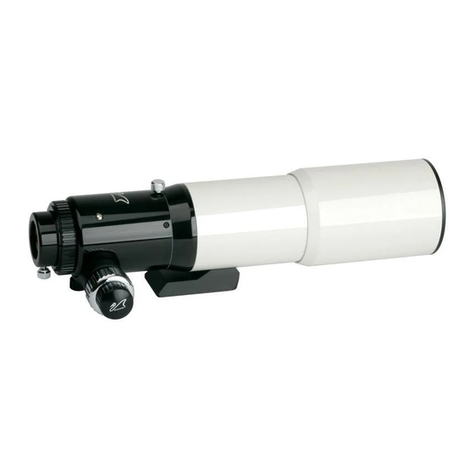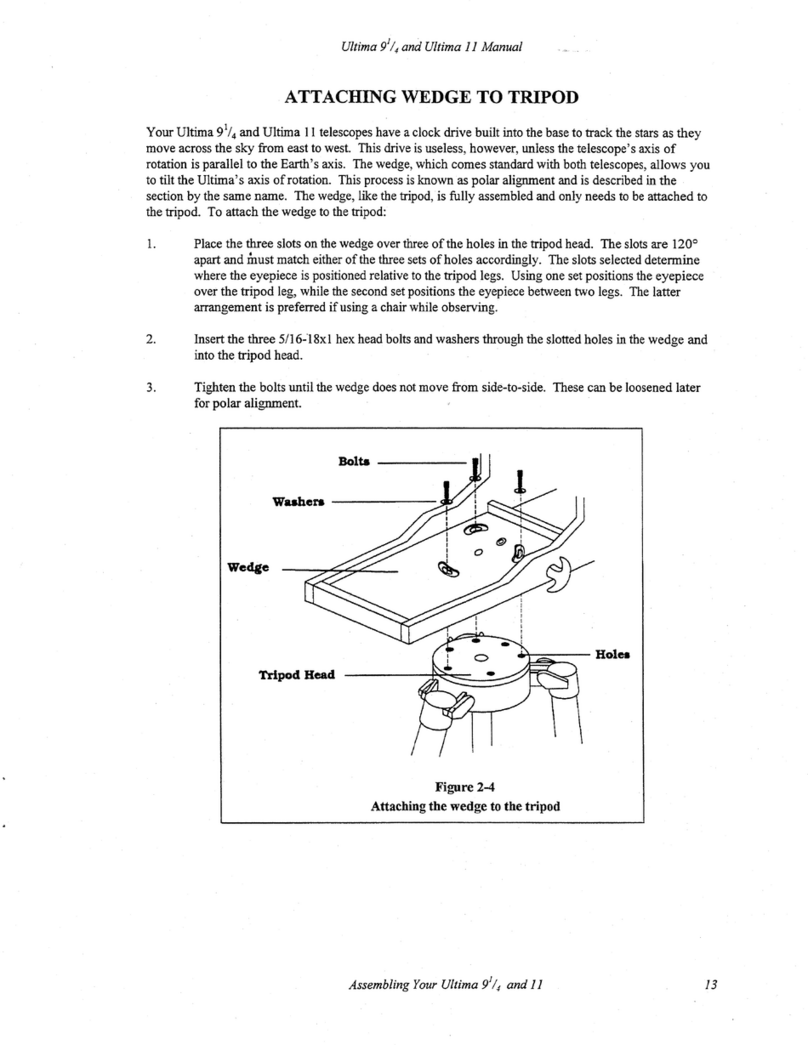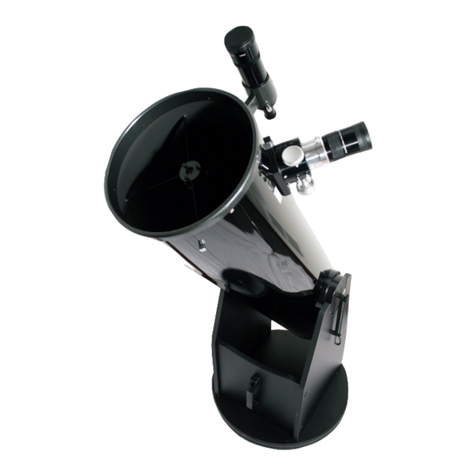Discovery Telecom 50mm Student User manual

Space Exploration Gear
50mm Student
Telescope
8+
AGES
50mm Student
Telescope
INSTRUCTION MANUAL
WARNING :
Contains button or coin cell battery.
Hazardous if swallowed - see instructions.
!

WARNING
CHOKING HAZARD – Small parts. Not for children under 3 years.
01
03
02
04
05
06
07
08
2
CONTENTS

3
Contents
50mm Objective Lens
Pan-Tilt Alt-Azimuth Mount
Tripod with accessory tray
Optical Tube Assembly (OTA)
with Dew Shield
Focus Wheel
Diagonal
1.25” Eyepieces
(12.5mm and 20mm)
Red Dot Viewfinder
01
02
03
04
05
06
07
08
Parts Overview
CONTENTS
Instruction Manual, &
Downloadable Planisphere Visit:
www.exploreone.com/pages/product-manuals

4
Assembly:
Note: We recommend assembling your telescope for the first time in the daylight or in a
lit room so that you can familiarize yourself with assembly steps and all components.
• Open the tripod until the tripod spreaders are fully extended. Put the
accessory tray in place and turn it clockwise until stable. To set the tripod
height, turn the pressure fitting on each leg counterclockwise until loose.
Extend or retract the leg to the desired setting, then tighten the pressure
fitting until snug.
• Thread the panhandle clockwise onto the tripod head.
• Set the optical tube assembly on the tripod head and align the tab on the
bottom of the telescope tube with the slot in the tripod head. Thread the
front tension wheel until snug, then tighten the side tension thumbscrew.
Be careful not to over-tighten either screw.
• Insert the diagonal into the focuser and secure it by tightening the
thumbscrews.
• Slide the red dot viewfinder into the finder bracket that is already
mounted on the telescope tube.
• Place your chosen eyepiece into the diagonal. We recommend starting
with the 20mm because it will provide the widest field of view.
HOW TO SET UP

5
HOW TO SET UP
1. 50mm Objective Lens
2. Pan-Tilt Alt-Azimuth Mount
3. Tripod with accessory tray
4. Optical Tube Assembly (OTA)
with Dew Shield
5. Focus Wheel
6. Diagonal
7. 1.25” Eyepieces
(12.5mm and 20mm)
8. Red Dot Viewfinder 2
3
4
5
8
7
1

TELESCOPE TERMS TO KNOW:
Diagonal: A mirror that deflects the ray of light 90 degrees.
With a horizontal telescope tube, this device deflects the light upwards so
that you can comfortably observe by looking downwards into the eyepiece.
The image in a diagonal mirror appears upright, but rotated around its
vertical axis (mirror image).
Focal length: Everything that magnifies an object via an optic lens has a
certain focal length. The focal length is the length of the path the light travels
from the surface of the lens to its focal point. The focal point is also referred
to as the focus. In focus, the image is clear. In the case of a telescope, the
focal length of the telescope tube and the eyepieces are used to determine
magnification.
Lens: The lens turns the light that falls on it around in such a way so that
the light gives a clear image in the focal point after it has traveled a certain
distance (focal length).
Eyepiece: An eyepiece is a system made for your eye and comprised of one
or more lenses. In an eyepiece, the clear image that is generated in the focal
point of a lens is captured and magnified still more.
Magnification: The magnification corresponds to the difference between
observation with the naked eye and observation through a magnifying device
like a telescope. If a telescope configuration has a magnification of 30x, then an
object viewed through the telescope will appear 30 times larger than it would
with the naked eye. To calculate the magnification of your telescope setup,
divide the focal length of the telescope tube by the focal length of the eyepiece.
6
INSTRUCTION MANUAL

7
Using/Aligning the Red Dot Viewfinder:
The viewfinder is powered by a CR-2032 battery that is included. Before using
the viewfinder for the first time, remember to remove the plastic insulator
that is blocking the battery from connecting.
When it is time to replace the battery, remove the battery cap by loosening
the set screw. Take out the old battery and slide a new battery in place with
the positive side showing. Replace the cap, and tighten the set screw.
For the viewfinder to be effective, it must be aligned. To do this:
• Insert the 20mm eyepiece into the diagonal and power on the viewfinder by
sliding the switch on its right side to an “On” position.
• Point the eyepiece at an easy to identify target like a telephone pole that is
approximately 200 yards away. Center the object in the eyepiece. Lock the
telescope into place by tightening the panhandle.
• Without moving the telescope, position the red dot using the two
adjustment screws so that it shares the same view as the one in your
eyepiece. The front screw will move the viewfinder up and down, and the
other will move it side to side. Your viewfinder is now aligned.
Note: To preserve battery life, don’t forget to turn off the viewfinder after use.
Did you know?
The magnifying power of a telescope is determined by dividing the focal
length of the telescope by the focal length of the eyepiece. This means
that as the focal length of your eyepiece increases, the magnifying power
decreases.

8
The Red Dot Viewfinder is
powered by a battery type
CR-2032 (3V); if a replacement is
necessary, remove cap (Fig. 1) by
unscrewing set screw (Fig. 2) and
sliding battery towards the front.
Slide new battery in place with the
positive (+) side showing. Replace
cap and tighten with
set screw (Fig. 2).
Fig. 1 Fig. 2
Front
Red Dot Viewfinder
(bottom view)
El Visor Red Dot es
impulsado por un tipo de batería
CR-2032 (3V); si un reemplazo es
necesario, retire la tapa (fig. 1),
desenroscando el tornillo de ajuste
(fig. 2) y la batería de deslizamiento
hacia la parte delantera. Deslice la
pila en el lugar con la positiva
proyección lateral (+). Reemplace
la tapa y apriete con
el tornillo de
fijación (fig. 2).
fig. 1 fig. 2
frente
Red Dot visor
(vista desde abajo)
English
Le Dot Viseur rouge est
alimenté par une batterie de type
CR-2032 (3V), si un remplacement
est nécessaire, enlever le bouchon
(Fig. 1) en dévissant la vis de
réglage (Fig. 2) et la batterie de
glissement vers l'avant. Glisser la
nouvelle pile en place avec la
borne positive (+) côté montrant.
Remettre le bouchon et
le serrer avec
la vis de
pression
(Fig. 2).
Fig. 1 Fig. 2
de devant
Red Dot Viseur
(vue de dessous)
FrenchSpanish

9
Using your telescope:
After you have aligned your viewfinder, you are ready to start observing!
Put the 20mm eyepiece into the diagonal to get the widest field of view. This
wider field of view will make it easier to locate and track objects.
Use the panhandle to move the scope up, down and side to side until your
target comes into view in the eyepiece. It is important to remember that
the rotation of the Earth means objects will move out of your eyepiece fairly
quickly. Once you have found and focused on your desired target, you can
track it as it journeys across the night sky using the panhandle.
For a closer look at an object, you can insert the 12.5mm eyepiece.
The magnification will increase from 30x to 48x.
Cleaning:
Your telescope is a precision optical device and keeping the optics free
of dust and dirt is crucial for optimal performance. To clean the lenses
(objective and eyepiece) use only a photo-grade soft brush or a lint-free
cloth, like a microfiber cloth. Do not press down too hard while cleaning,
as this might scratch the lens. Ask your parents to help if your telescope is
really dirty. f necessary, the cleaning cloth can be moistened with an optical
glass cleaning fluid and the lens wiped clean using very little pressure. Do
not use harsh detergents!
Make sure your telescope is always protected against dust and dirt.
After use, leave it in a warm room to dry off before storing.

10
POSSIBLE OBJECTS
FOR OBSERVATION:
Terrestrial objects
Take note of the examples below, including
Mount Rushmore and the golf course.
Start with the 20 mm eyepiece and focus
until the image is clear. After mastering
the 20 mm eyepiece, switch to the 12.5
mm eyepiece and practice scanning and
focusing until the image is clear. Choose
several terrestrial objects to practice
focusing on, but never point your telescope
at or near the sun, or you risk blindness.
The Moon
Diameter: 3,476 km
Distance: Approximately 384,401 km
The Moon is the Earth’s only natural satellite,
and it is the second brightest object in the
sky (after the Sun). Although it is our closest
neighbor, a lot of people have never really
taken a good long like at the Moon. With
your telescope, you should be able to see
several interesting lunar features. These
include lunar maria, which appear as vast
plains, and some of the larger craters. The
best views will be found along the terminator,
which is the edge where the visible and
cloaked portions of the Moon meet.
f=20 mm f=12.5 mm
The Moon
f=20 mm f=12.5 mm
Terrestrial Images

11
Troubleshooting Guide:
No picture Remove dust protection cap and sun-shield
from the objective opening.
Blurred picture Adjust focus using focus ring.
No focus possible Wait for temperature to balance out.
Bad quality Never observe through a glass surface
such as a window.
Viewing object visible
in the finder, but not
through the telescope
Align finder to telescope
(see instructions)
Despite using star
diagonal prism the
picture is “crooked”
The star diagonal prism should be
vertical in the eyepiece connection.

12
SAFETY WARNINGS
• Respect privacy: When using
this device, respect the
privacy of other people. For
example, do not use them to
look into people’s homes.
• Choking hazard: Children
should only use device
under adult supervision.
Keep packaging materials
like plastic bags and rubber
bands out of the reach of
children as these materials
pose a choking hazard.
• Risk of blindness: Never
use this device to look
directly at the Sun or in the
direct proximity of the Sun.
Doing so may result in a
permanent loss of vision.
• Do not disassemble this
device. In the event of a
defect, please contact
your dealer. The dealer
will contact the Customer
Service Department and
can send the device in to
be repaired if necessary.
• Battery guidelines: The red
dot viewfinder contains
electronic components that
are powered by batteries.
Batteries should be kept
out of children’s reach.
When inserting batteries,
please ensure the polarity is
correct. Insert the batteries
according to the displayed
+/- information. Never
mix old and new batteries.
Replace all batteries at
the same time. Never mix
alkaline, standard carbon-
zinc and rechargeable
nickel-cadmium batteries.
Never short circuit the
device or batteries or throw
either into a fire. Leaking
or damaged batteries can
cause injury if they come
into contact with the skin.
If you need to handle such
batteries, please wear
suitable safety gloves.
Remove batteries from the
product before extended
storage to prevent leaking.
Do not immerse the battery
compartment in water.
WARNING: This product
contains a Button or
Coin Cell Battery. A
swallowed Button or
Coin Cell Battery can
cause internal chemical
burns in as little as two
hours and lead to death.
Dispose of used batteries
immediately. Keep new
and used batteries away
from children. If you
think batteries might
have been swallowed or
placed inside any part of
the body, seek immediate
medical attention.
• Do not subject the
device to temperatures
exceeding 60° C (140° F).
• Disposal: Keep packaging
materials, like plastic bags
and rubber bands, away
from children as they a
pose a risk of suffocation.
Dispose of packaging
materials as legally
required. Consult the local
authority on the matter
if necessary and recycle
materials when possible.
Read and follow the instructions, safety rules, and first aid information.
!

©2017 Discovery Communications, LLC. Discovery™and the Discovery™logo are
trademarks of Discovery Communications, LLC, used under license.
All rights reserved. discoverykids.com
©2017 Explore Scientific, LLC, a Journey North Company.
1010 S. 48th Street, Springdale AR 72762
All rights reserved. explorescientificusa.com | exploreone.com | 866.252.3811
Made in China
CONFORMS TO THE SAFETY REQUIREMENTS OF ASTM F963
This manual suits for next models
1
Table of contents
Other Discovery Telecom Telescope manuals

Discovery Telecom
Discovery Telecom 4410040 User manual

Discovery Telecom
Discovery Telecom Scope Set 3 User manual

Discovery Telecom
Discovery Telecom 3-in-1 Micro Viewer User manual
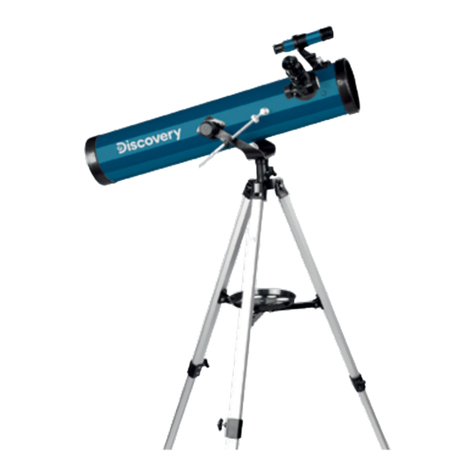
Discovery Telecom
Discovery Telecom Spark 506 AZ User manual
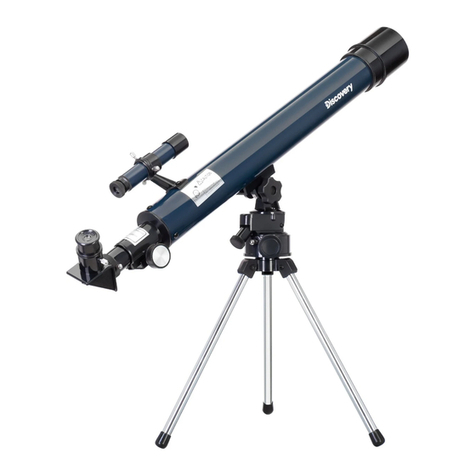
Discovery Telecom
Discovery Telecom Scope Set 2 User manual
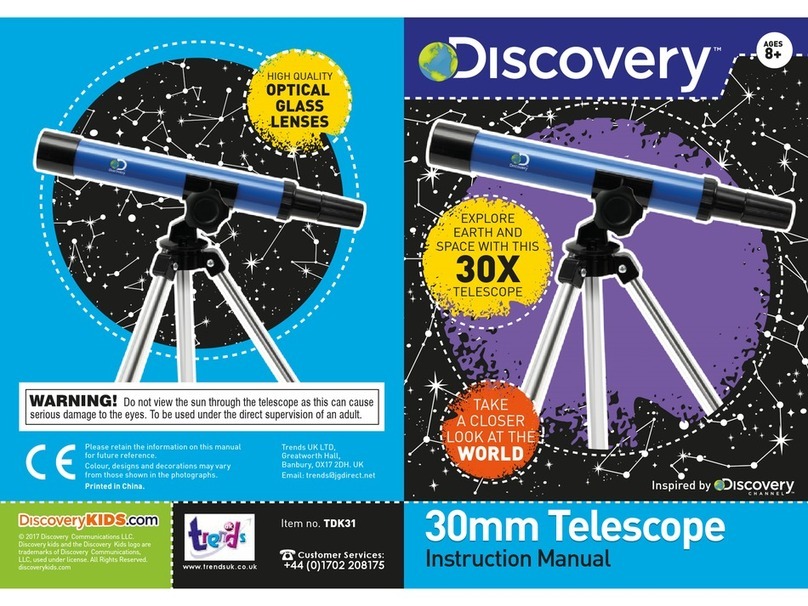
Discovery Telecom
Discovery Telecom TDK31 User manual
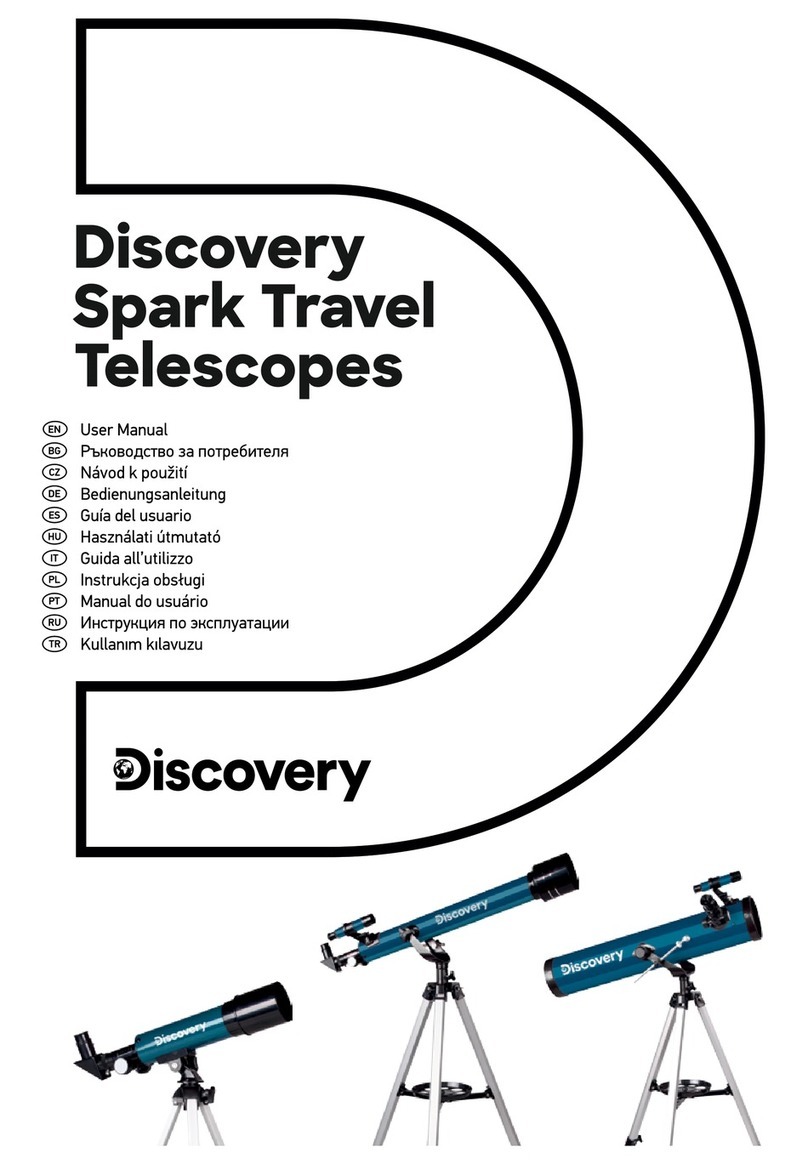
Discovery Telecom
Discovery Telecom Spark Travel 50 User manual

